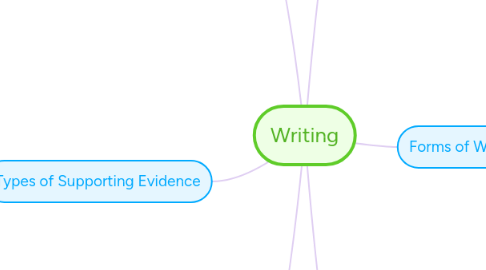
1. Fiction V.S. Non-Fiction
1.1. Non-Fiction and Fiction have a few similarities in which both have a main idea or concept, they both can be in the first, second, or third person. There also can be a narrator in the story and have a main character that is a Boy or a Girl.
1.1.1. Fiction
1.1.1.1. Fiction writing normally is based upon events that did not happen in real life. Also the main idea of a piece of writing that is fictitious is called a theme. A theme is a lesson the book is trying to teach the reader, like don't play with fire.
1.1.2. Non-Fiction
1.1.2.1. Non-Fiction on the other hand has to be based upon events that happened in history, or tells information about a subject, like dogs. The main idea in this kind of writing is called the thesis. The thesis is like a main idea, where it tells the reader why they want them to read the book, essay, etc.
2. Types of Supporting Evidence
2.1. Statistics
2.2. Expert Opinions
2.3. Details
2.4. Examples
2.5. Anecdotes
2.6. Famous Quotes
2.7. Interview Data
2.8. Surveys
2.9. Graphs
2.10. Visual Aides
2.11. Primary/Secondary Sources
2.12. Personal Observations
2.13. Experiments
2.14. Common Logic
2.15. Facts
3. Goals When Writing
3.1. Purpose
3.1.1. When writing you want to tell the reader why you are writing this book, essay, etc. and also why he/she should read it.
3.2. Prompt
3.2.1. The prompt is a way for the writer to get ideas about the topic he/she is writing about.
3.3. Audience
3.3.1. The Audience is who you are writing to. When writing, knowing the audience is important so that you know what kind of vocabulary to use to them.
